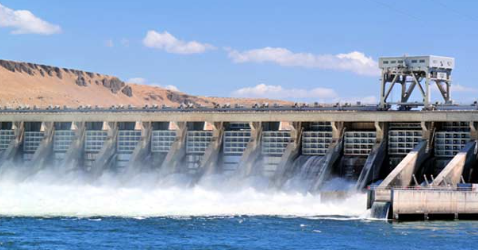
How Dam Construction Supports and Enhances Natural Resources
Introduction
Dam construction plays a pivotal role in supporting and enhancing natural resources. This article explores the multifaceted impact of dams on the environment, wildlife, and the broader ecosystem. We will delve into various aspects of how does the construction of dams positively affect natural resources.
The Role of Dams in Water Resource Management
Dams are essential for effective water resource management. They help regulate the flow of rivers and streams, ensuring a stable water supply for both humans and wildlife. By controlling water flow, dams prevent floods during heavy rainfall and ensure a consistent water source during dry spells.
Biodiversity Conservation through Dam Ecosystems
Dams create unique ecosystems that can support a wide range of flora and fauna. Reservoirs formed by dams often become habitats for various aquatic species, including fish and amphibians. These areas foster biodiversity, contributing to the conservation of natural resources.
Irrigation and Agriculture
One of the primary benefits of dam construction is irrigation. Dams store water for agricultural purposes, enabling the cultivation of crops in regions that would otherwise be arid. This agricultural support sustains food production and reduces pressure on natural ecosystems.
Hydroelectric Power Generation
Hydropower, generated by dammed water, is a clean and renewable energy source. It reduces the reliance on fossil fuels, mitigating environmental pollution and resource depletion. The integration of hydroelectric power into the energy mix enhances sustainability.
Navigational Advantages
Dams facilitate navigation along rivers, making transportation more efficient. This reduces the need for land-based transport infrastructure, minimizing habitat disruption and resource consumption.
Flood Control
Dams act as a buffer against destructive floods. By regulating water flow, they protect communities, infrastructure, and agricultural lands from the devastating effects of flooding.
Recreational Opportunities
Reservoirs created by dams offer recreational opportunities like boating, fishing, and camping. These activities connect people with nature and promote a deeper appreciation for natural resources.
Carbon Sequestration in Dammed Vegetation
Dammed areas often foster the growth of vegetation. Trees and plants play a crucial role in sequestering carbon dioxide, mitigating climate change, and enhancing air quality.
Riparian Habitat Restoration
Dam construction can be accompanied by riparian habitat restoration efforts. This helps revitalize the ecosystems along riverbanks, supporting various wildlife species.
Water Quality Improvement
Dams help improve water quality by trapping sediments and pollutants. This ensures cleaner water downstream, benefiting aquatic life and ecosystems.
Enhancing Tourism and Economy
Dams can boost tourism, which, in turn, drives economic growth in surrounding areas. Tourists flock to enjoy the scenic beauty, recreational activities, and wildlife sightings around these structures.
Addressing Water Scarcity
In regions prone to water scarcity, dams serve as lifelines. They provide a stable water source for drinking, agriculture, and industrial processes, ultimately conserving precious natural resources.







